Flow meters are critical instruments in industrial processes, allowing precise measurement of the flow of liquids, gases, or steam through pipelines. However, during maintenance, calibration, or replacement, continuous operation of the system is often necessary, which is where bypass systems come into play. A bypass setup allows flow to be redirected temporarily without halting the entire process, ensuring operational efficiency. Below are the detailed principles for setting up bypasses for flow meters.
1. Maintaining the Integrity of the Main Flow Path
The primary function of a bypass is to ensure that the main flow path through the flow meter remains uninterrupted under normal operating conditions. The bypass valve should remain closed during normal operations to avoid any leakage or diversion of flow from the meter. Proper valve selection and placement are essential for minimizing pressure drops and ensuring that the flow meter performs as intended without external disruptions.
The design of the bypass should be such that when the flow is routed through the flow meter, the system experiences no adverse effects, such as turbulence or back pressure, which could distort measurement accuracy.
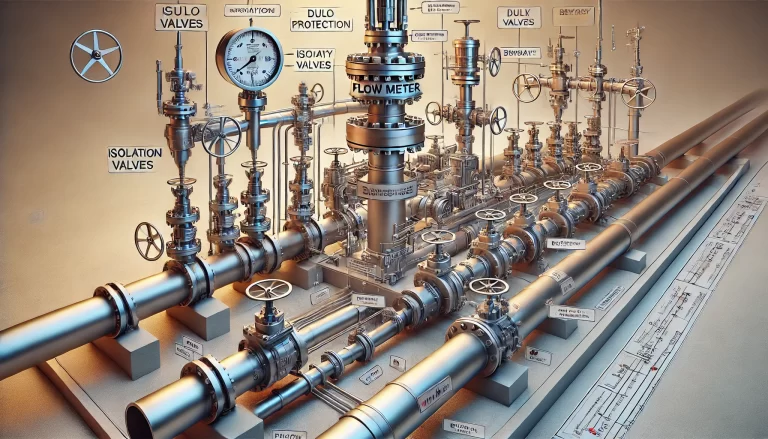
2. Ensuring Flow Measurement Accuracy
Accuracy is paramount in flow measurement. When designing a bypass system, it is crucial to avoid interference with the flow meter’s measurement capabilities. Factors such as pipe layout, pressure conditions, and turbulence should be considered in both the main line and the bypass line to avoid disrupting flow profiles.
To maintain accuracy:
- Ensure smooth transitions in the pipe layout, avoiding sharp bends near the flow meter that could create turbulent flow.
- Install straight lengths of pipe upstream and downstream of the flow meter to help normalize the flow profile.
- Use appropriate pipe diameters and fittings that match the specifications of the flow meter.
3. Facilitating Maintenance and Calibration
Bypass systems are primarily installed to facilitate easy maintenance and calibration of flow meters without shutting down the entire process. During maintenance, the flow is diverted through the bypass line while the meter is serviced. To make this process seamless, the bypass should be designed for quick and efficient operation.
Key considerations include:
- Isolation Valves: These are placed on both sides of the flow meter to isolate it from the main line. These valves should be quick-acting and reliable.
- Bypass Valves: A bypass valve is installed to redirect flow when the flow meter is taken offline. Ideally, this valve should be easy to operate, and robust enough to handle various pressure and flow conditions.
- Ease of Access: The bypass system, including valves and fittings, should be easily accessible for operation and maintenance staff, reducing downtime during repairs or recalibrations.
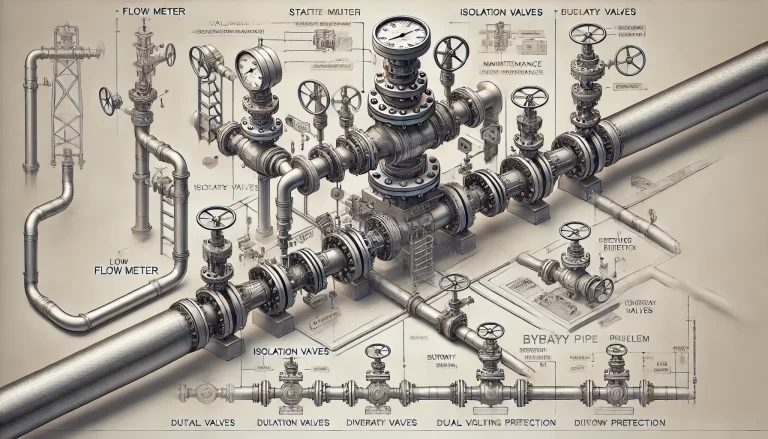
4. Flow Control in the Bypass Line
When the bypass system is in use, controlling the flow through the bypass is crucial to avoid system overloads or abrupt pressure changes. In many cases, flow control valves or throttling mechanisms are employed to regulate the flow in the bypass line.
Proper control of the bypass flow prevents:
- Systematic overloading or damage to downstream equipment.
- Excessive or insufficient flow that could compromise the performance of other processes.
Flow control devices must be selected based on the fluid characteristics, pressure, and temperature, ensuring that they can handle the operating conditions of the system when the bypass is active.
5. System Safety and Stability
In addition to facilitating maintenance, a bypass system should ensure the safety and stability of the entire system during its operation. Especially in systems dealing with high pressures, high temperatures, or hazardous substances, the bypass setup must comply with safety regulations to avoid accidents or leaks.
Considerations for safety and stability include:
- High-quality Valves and Seals: All valves in the bypass system should be selected for durability and leak resistance, especially in corrosive or high-pressure environments.
- Redundancy in Safety: Use double-block valve systems, where two isolation valves are installed in series for the main flow line, adding a layer of safety in case one valve fails.
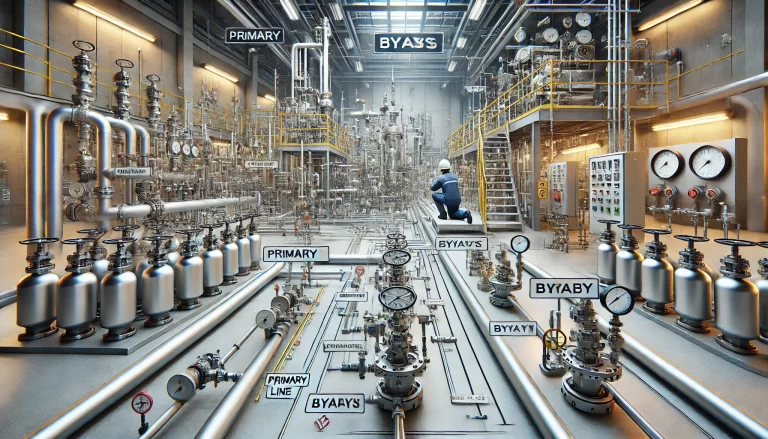
6. Optimal Sizing of Bypass Piping
The pipe size for the bypass line is often smaller than the main line, as the bypass is typically used for temporary flow diversion during maintenance, not for full-capacity operations. Proper sizing of the bypass line is critical to ensure efficient flow management without causing excessive pressure drops or disturbances in the system.
The general rule is:
- Pipe Diameter: The bypass should have a pipe diameter that allows for sufficient flow during maintenance but avoids unnecessary over-sizing that could result in flow imbalance or pressure instability.
- Flow Capacity: The bypass line should be able to handle sufficient flow to maintain system operations during calibration or repairs, without overwhelming downstream equipment.
7. Dual Valve Protection
To avoid accidental opening of the bypass system, dual valve protection is often recommended. This entails installing two valves, one upstream and one downstream of the flow meter, which can be closed independently to isolate the meter. Additionally, a third valve on the bypass line itself ensures full control over whether the flow is directed through the main line or the bypass.
This dual valve configuration prevents any unintended opening or closing of the bypass, maintaining control over the system at all times. It also helps ensure the main flow can be isolated without any leakage when the bypass is active.
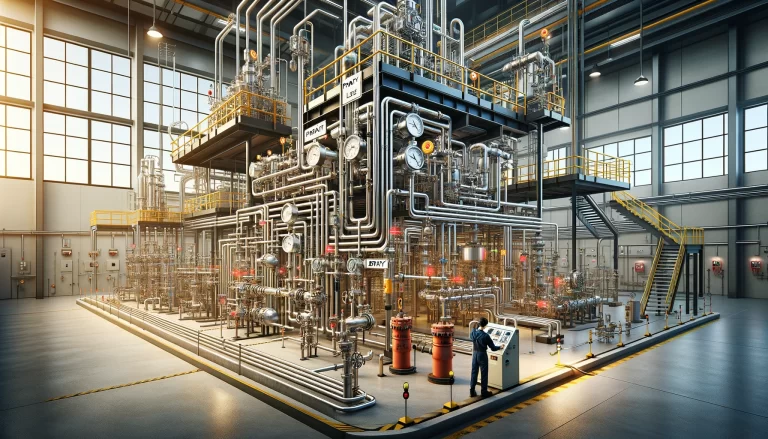
8. Clear Marking and Operating Instructions
To ensure the bypass system operates correctly and safely, all valves, pipes, and control points should be clearly labeled. These labels should indicate the flow direction, valve positions (open/closed), and any other relevant operational details.
Operating procedures should be documented, outlining:
- When and how the bypass system should be activated.
- Step-by-step instructions for isolating the flow meter.
- Safety checks to ensure that once maintenance is complete, the flow meter is re-integrated correctly into the system.
Proper documentation and labeling help prevent operational errors and ensure that the system is operated in line with safety and efficiency standards.
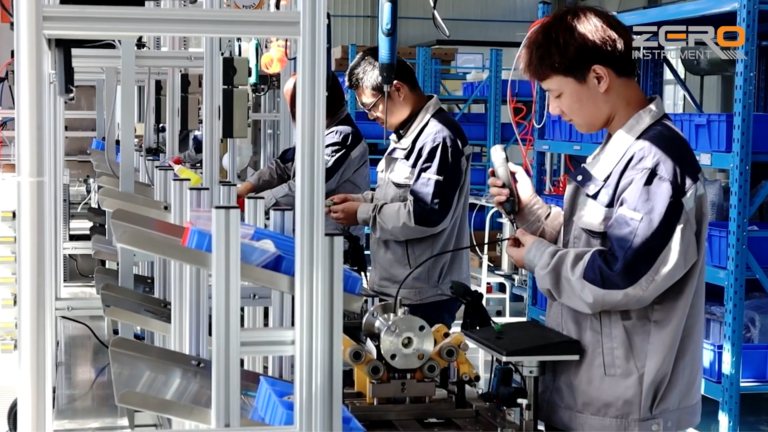
Conclusion
A well-designed bypass system around a flow meter is essential for ensuring continuous process operation during maintenance and calibration. By following key principles—such as maintaining measurement accuracy, controlling bypass flow, facilitating safe maintenance, and ensuring system stability—engineers can ensure that the bypass system functions effectively without compromising the overall process. Adherence to safety, proper valve configurations, and optimal pipe sizing are critical for maximizing system uptime and reliability while safeguarding the accuracy of flow measurements.
